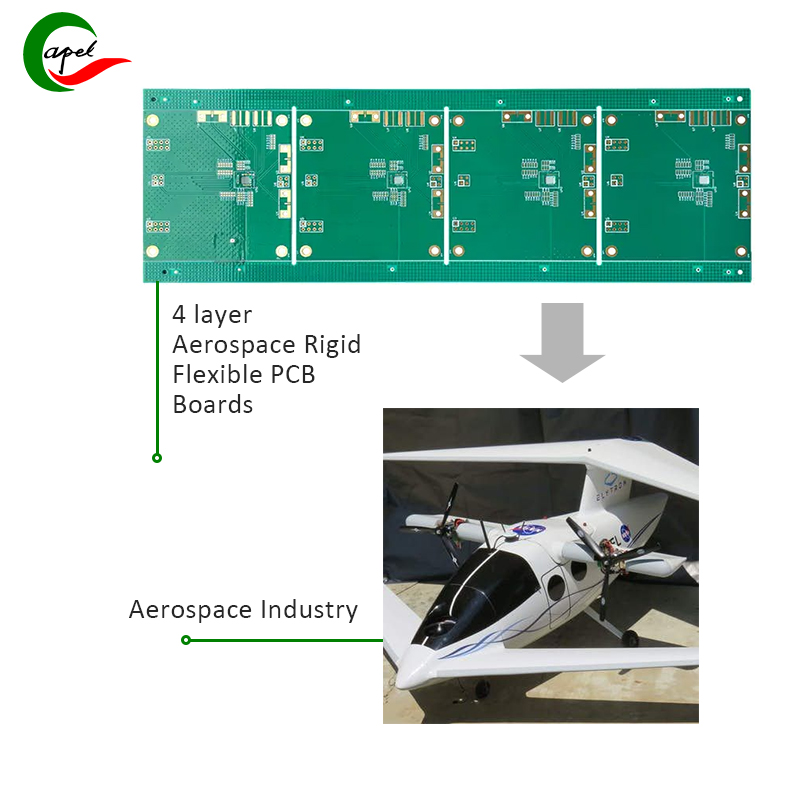As an engineering expert with over 15 years of experience in 4-layer rigid-flex PCB design, I’m excited to share insights into innovative uses of this technology and its ability to enhance electronic design. In this detailed article, we will provide an overview of 4-layer rigid-flex PCBs, explore their design considerations, and provide a comprehensive case study highlighting the transformative impact of this advanced technology.
Learn about 4-layer rigid-flex board:Uncovering the Revolutionary Technology
4-layer rigid-flex PCBs represent a breakthrough advancement in electronic design, providing unparalleled flexibility, reliability and space-saving advantages. This advanced technology integrates rigid and flexible PCB substrates, giving designers the freedom to create complex three-dimensional circuits that traditional rigid PCBs cannot accommodate. The 4-layer configuration further enhances design capabilities, increasing routing density and improving signal integrity in a compact form factor.
Design Considerations for 4-Layer Rigid-Flex PCB: Optimization Strategies for Superior Performance
Designing a 4-layer rigid-flex circuit board requires careful attention to various factors to realize its full potential. With extensive experience in this field, I have learned that optimizing stack-up, material selection, and routing strategies are critical to achieving superior performance and reliability. Stackup configuration plays a key role in determining signal integrity, impedance control and mechanical performance, while careful material selection ensures compatibility with the application’s environmental and mechanical requirements.
In addition, routing strategies for 4-layer rigid-flex PCBs require a strategic approach to accommodate the unique interconnectivity between rigid and flexible parts. Advanced design software combined with expertise in high-speed and high-density interconnects is critical to achieving robust interfaces that mitigate signal degradation and ensure seamless integration with the mechanical constraints of the assembly.
Case study: Using 4-layer rigid-flex boards to revolutionize electronic design
To illustrate the transformative impact of 4-layer rigid-flex PCB technology, let’s delve into a detailed case study demonstrating its unparalleled capabilities and practical applications.
Customer Background:
A leading manufacturer in the aerospace industry presented our engineering team with a serious challenge. They needed a compact and reliable solution to integrate complex electronic systems into next-generation satellite communications modules. Due to space constraints and the need for enhanced durability in challenging environmental conditions, traditional rigid PCB approaches were deemed insufficient.
Solution Deployment:
Leveraging our expertise in 4-layer rigid-flex PCB design, we proposed a custom solution that leveraged the unique advantages of this technology. The flexibility and compactness of the 4-layer rigid-flex printed circuit board allows us to seamlessly integrate complex electronic components while meeting the strict size and weight constraints of satellite communications modules. The design also incorporates advanced signal integrity measures to ensure reliable, high-speed data transmission necessary for satellite communications systems.
Results and Benefits:
The deployment of 4-layer rigid-flex PCB board technology has created a paradigm shift for our customers. They have experienced significant reductions in overall system weight and volume, allowing for more efficient use of onboard space and significantly enhanced system reliability. The flexibility of rigid-flex designs helps simplify assembly and minimize interconnect complexity, thereby increasing manufacturability and reducing production costs. Additionally, the enhanced signal integrity and robust mechanical properties of the 4-layer rigid-flex PCB ensure uninterrupted performance, even in the demanding operating environments of satellite communications systems.
4 Layer Rigid Flex PCB Manufacturing Process
Conclusion: Embracing the future of electronic design using 4-layer rigid-flex PCB technology
In short, the adoption of 4-layer rigid-flexible PCB technology has brought a revolutionary leap to electronic design capabilities. Its ability to harmoniously blend flexibility, reliability and compactness offers unprecedented opportunities to optimize electronic systems in different industries, as exemplified by the aerospace case study. By gaining a deeper understanding of the complexity and potential of 4-layer rigid-flex PCB designs, engineers can unlock endless possibilities for creating innovative and efficient electronic designs.
As an engineering expert with extensive experience in 4-layer rigid-flex PCB technology, I have witnessed firsthand the powerful impact this advanced technology has on electronic design. The applications of 4-layer rigid-flex PCBs extend far beyond traditional limitations, enabling highly complex and compact electronic systems that were once considered unachievable. I believe that by adopting this cutting-edge technology, engineers and designers can take their electronic design capabilities to new heights, ultimately driving technological progress and innovation in numerous industries.
Post time: Jan-23-2024
Back







